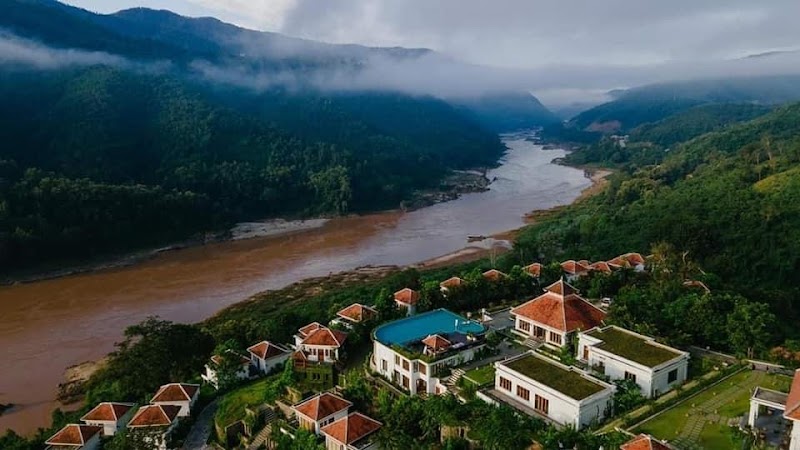
Doi Tung Flower Festival: Chiang Rai’s Blooming Adventure in the Highlands
Experience the striking colors and cool mountain air of the Doi Tung Flower Festival in Chiang Rai Province. This annual event offers both casual strolls through meticulously landscaped gardens and challenging hikes into mature forest trails, blending vivid blooms with breathtaking vistas.
Wear Gripping Hiking Shoes
The trails combine paved garden paths with uneven, sometimes slippery dirt and stone sections. Choose supportive shoes with good traction to navigate safely.
Stay Hydrated Throughout the Day
Mountain air can be deceptively dry. Bring your own water bottle and refill at designated spring water stations to avoid dehydration.
Dress in Layers
Temperatures shift quickly from chilly mornings to warm afternoons. Lightweight layers allow for comfort and adjustment on the move.
Plan for Festival Crowds
Weekends and holidays attract many visitors. Arrive early or on weekdays to avoid congestion and enjoy more peaceful moments in the gardens.
Doi Tung Flower Festival: Chiang Rai’s Blooming Adventure in the Highlands
Each December, Doi Tung transforms into a vibrant spectacle of color during the Doi Tung Flower Festival, held in the heart of Chiang Rai Province. At 1,389 meters above sea level, this mountaintop sanctuary is home to exotic blooms and cultivated gardens that challenge even the most seasoned nature lover to look deeper. The festival offers more than just flowers—it invites hikers and explorers to engage directly with the landscape, where neat terraces of azaleas, orchids, and chrysanthemums glow against the crisp mountain air.
Arriving at Doi Tung, visitors find trails meandering through the opulent Mae Fah Luang Garden and beyond, into forest trails that test endurance with moderate 400-meter elevation gains over rolling terrain. The paths, often shaded by ancient teak and pine trees, carry the scent of earth and rain, while the intermittent clearings open wide views of the mountain ranges converging in the distance. Waterfalls dare hikers closer with their rushing calls, a reminder that this environment is alive and fiercely its own.
Planning your visit means timing your arrival between late November and early January when the festival blooms are at peak and cultural celebrations pulse through marketplaces and artisan stalls. Expect cool mornings demanding layers, with the sun warming afternoons into perfect hiking conditions. Footwear should be sturdy, gripping uneven stone and dirt trails that can become slippery after mountain mists blanket the area.
Hydration is key as the crisp air can mask thirst, and locally sourced spring water stations make replenishment simple. For casual visitors, the gardens offer paved paths and plenty of rest points, but adventurers looking to challenge themselves can continue on the steep hike up to the summit viewpoint—roughly 2 kilometers from the festival grounds—to witness a sweeping vista where the Thai-Myanmar borderlands stretch out, a place where the landscape is as much a force as any living creature.
More than a photo opportunity, the festival immerses visitors in the relationship between nature and the region’s longstanding cultural heritage. Tribal communities nearby showcase crafts and traditions, reminding visitors that the flowers bloom in a place fiercely protected by generations.
Whether you aim to capture the color explosion on your camera, soak in the mountain atmosphere, or simply move through an environment governed by its own rules, the Doi Tung Flower Festival offers something rare: an adventure that respects and showcases the mountain’s vibrant pulse without glamorizing the effort it takes to meet it.
Nearby Trips
All Adventures
Boat Charters
Water Activities
Adventures near Doi Tung, Chiang Rai Province
Discover the unique and memorable adventures that make Doi Tung, Chiang Rai Province special.
Frequently Asked Questions
What is the easiest way to reach the Doi Tung Flower Festival?
Most visitors travel from Chiang Rai city, located about 90 km away. Local tour operators run daily trips, or renting a car is a flexible option. The paved road climbs steadily, and parking is available near the garden entrance.
Are there hiking trails beyond the festival gardens?
Yes, several trails lead from the Mae Fah Luang Garden area into older forests. One popular route ascends 400 meters over 2 kilometers to a summit viewpoint offering panoramic views of the region’s borderlands.
What wildlife might I encounter during the festival?
Birdwatchers should look for colorful barbets and bulbuls flitting through the flowering trees. The area hosts squirrels and various butterflies attracted to the rich floral variety.
Is the festival accessible for families with young children?
The main garden areas are accessible on paved paths and suitable for all ages. However, the forest trails involve elevation and rough terrain that may challenge younger children.
How does the festival support local culture?
The event highlights crafts and traditions of local hill tribes, including the Akha and Lahu, with stalls offering textiles, silverwork, and traditional food—connecting floral beauty with cultural heritage.
Are there any environmental protections visitors should be aware of?
Yes, the area is part of a conservation project protecting native flora and fauna. Visitors are asked to stay on marked trails and avoid picking flowers to ensure the mountain remains fiercely vibrant for future generations.
Recommended Gear
Sturdy Hiking Shoes
Necessary for traction on diverse surfaces including stone paths and earthy trails.
Water Bottle
Staying hydrated is critical; refill points are available but bring sufficient capacity.
Light Layered Clothing
Adjusts to cool mornings and warmer afternoons, keeping you comfortable all day.
Sun Protection (Hat & Sunscreen)
Even in cooler seasons, sun exposure during hikes can be intense at elevation.
Local Insights
Hidden Gems
- "Doi Tung Royal Villa’s quiet terraces"
- "small secluded waterfall trails west of the main garden"
Wildlife
- "Asian barbets"
- "common palm civet"
- "colorful butterflies"
History
"The area was once a strategic border region and site for reforestation efforts spearheaded by the late Princess Mother, preserving local ecology and promoting sustainable agriculture."
